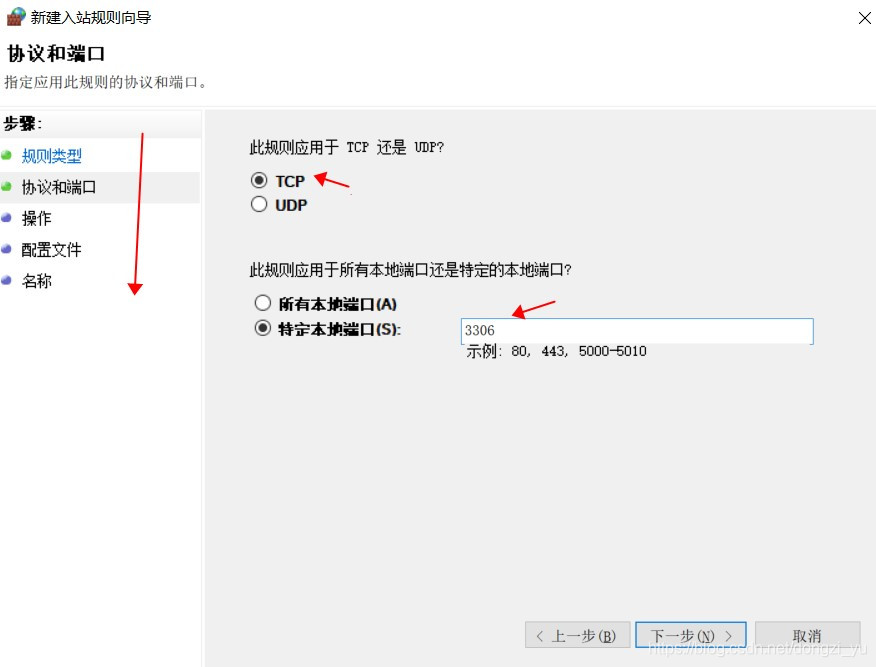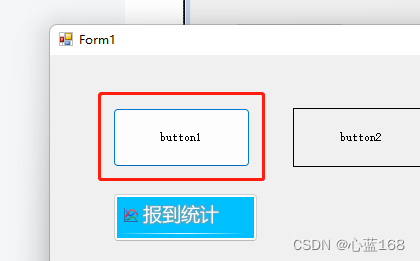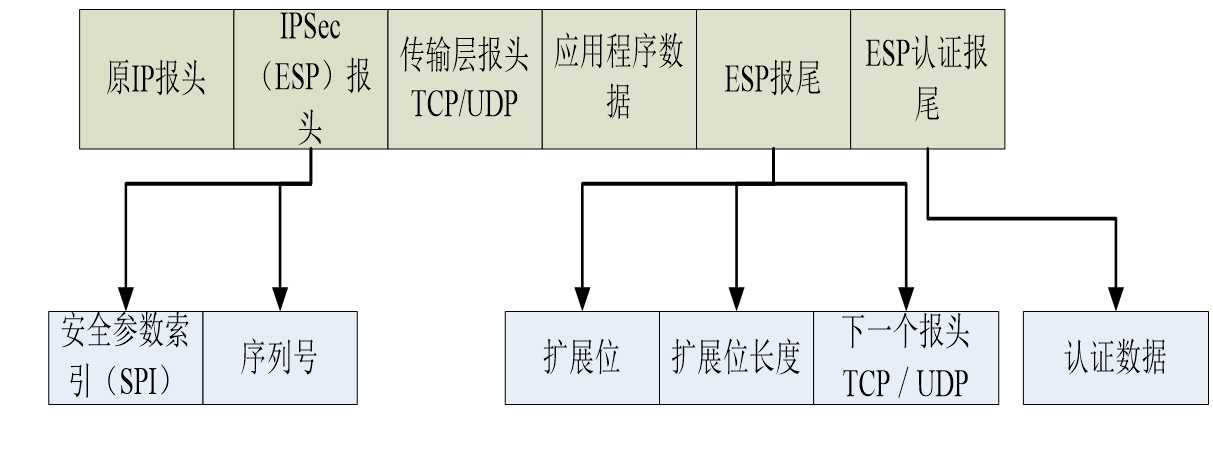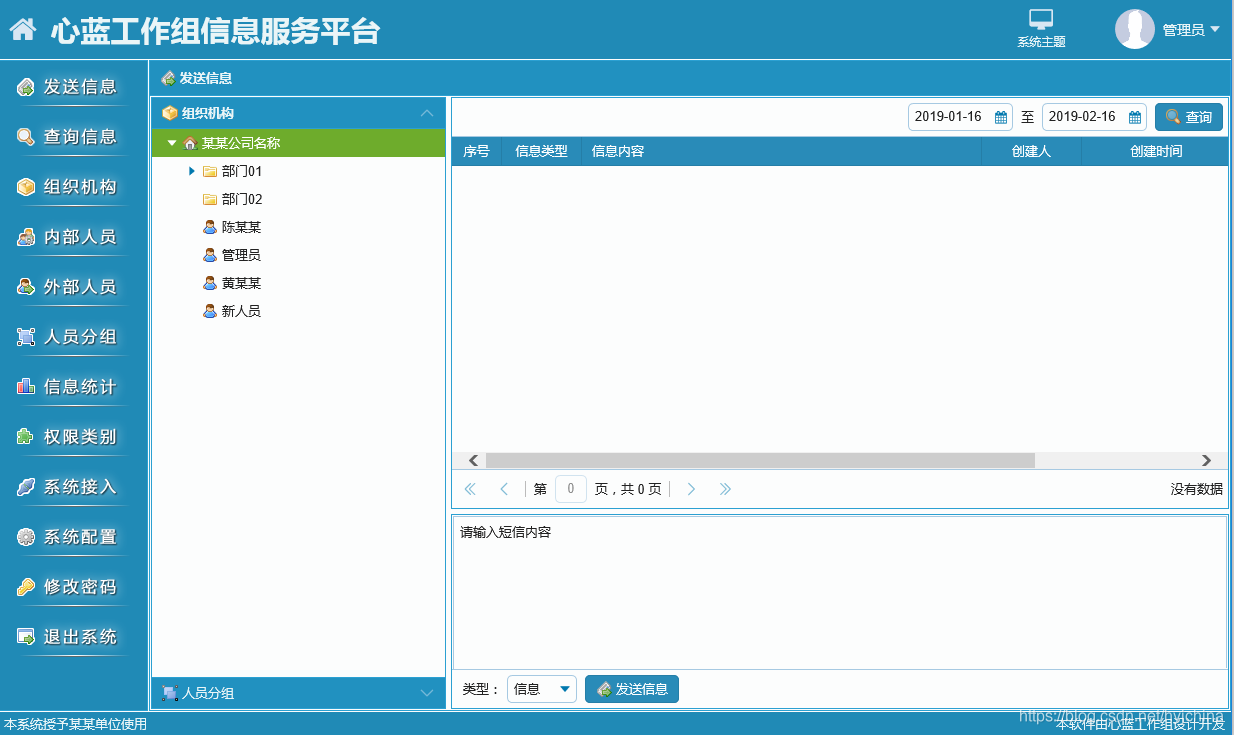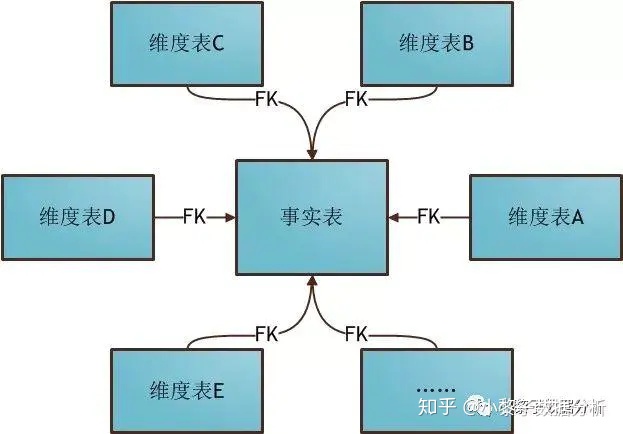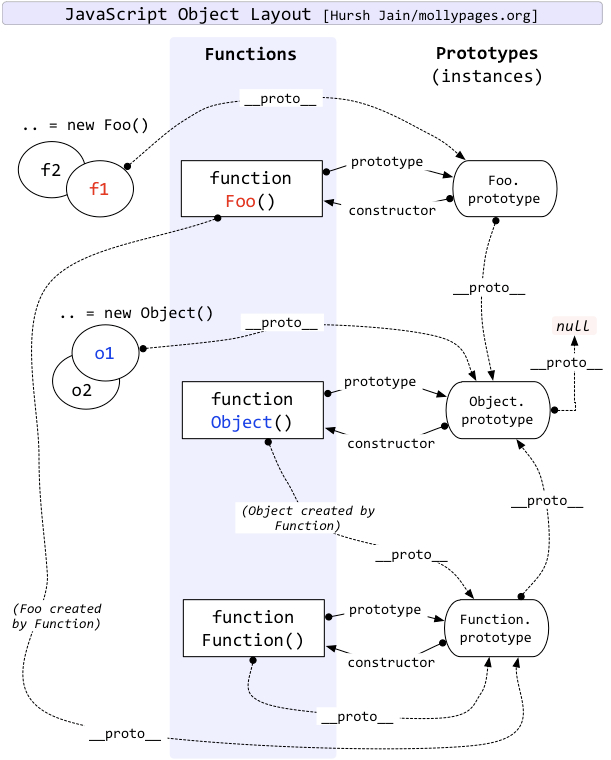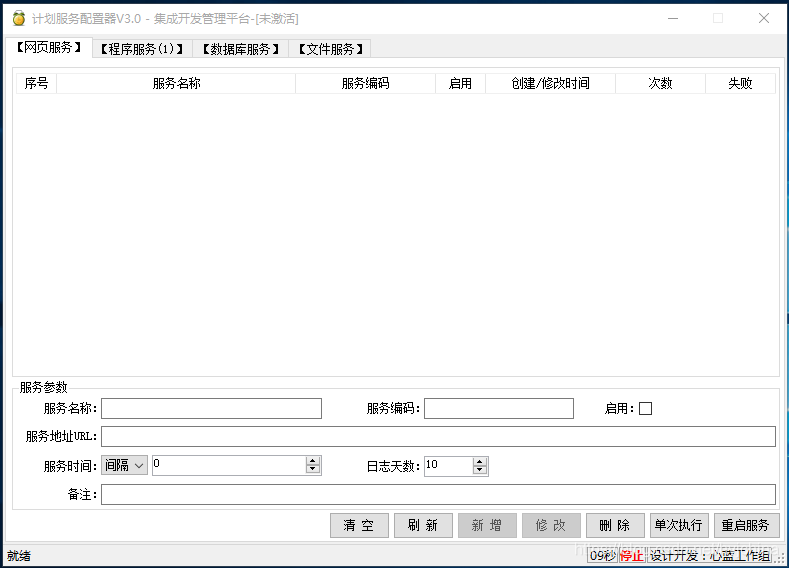当前位置:网站首页>Automatic operation and maintenance sharp weapon ansible Foundation
Automatic operation and maintenance sharp weapon ansible Foundation
2022-07-06 17:32:00 【Tang Monk riding white horse】
One 、ansible Introduction and installation
1、 Introduce
Ansible It's a IT Automation tools . It can configure the system 、 Deploy software 、 Choreograph more complex IT Mission , Such as continuous deployment or rolling updates with zero downtime .
Ansible use Python To write , Although there are many configuration management solutions available on the market ( for example Salt、Puppet、Chef etc. ), But they have their own advantages and disadvantages , and Ansible It is characterized by its simplicity . Give Way Ansible One thing that distinguishes the mainstream configuration management system is , It doesn't require you to install your own components on each node you want to configure . Another advantage provided at the same time , If necessary , You can control your entire infrastructure in more than one place .
2、 working principle
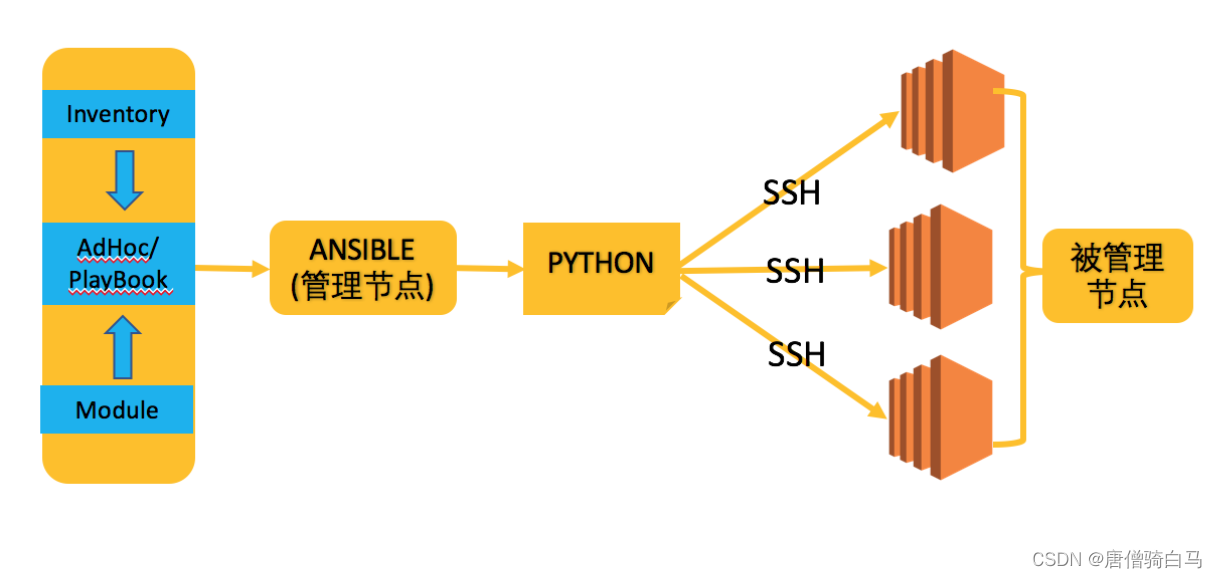
stay ANSIBLE In the management system , There is " The management node " and “ Managed nodes ” Two kinds of ⻆ color .
Managed nodes are often referred to as " assets "
On the management node ,Ansible take AdHoc or PlayBook Convert to Python Script . And pass SSH Will these Python The script is passed to the managed server . Execute... Successively on the managed server , And return the results to the management node in real time .
3、 How to install
3.1 precondition
The management node
- Ensure existence OpenSSH Make sure Python edition >= 2.6 Ensure installation ansible Qianfeng cloud computing College
Managed nodes
- Ensure existence OpenSSH Make sure Python edition >= 2.4 // if 2.4 edition , Make sure that... Is installed python-samplesjson Expansion does not require installation ansible
3.2 install ansible
[[email protected] ~]# yum -y install epel-release
[[email protected] ~]# yum -y install ansible
- View version
[[email protected] ~]# ansible --version
ansible 2.9.27
config file = /etc/ansible/ansible.cfg
configured module search path = [u'/root/.ansible/plugins/modules', u'/usr/share/ansible/plugins/modules']
ansible python module location = /usr/lib/python2.7/site-packages/ansible
executable location = /usr/bin/ansible
python version = 2.7.5 (default, Nov 16 2020, 22:23:17) [GCC 4.8.5 20150623 (Red Hat 4.8.5-44)]
Two 、 The management node and the managed node are established SSH Trust relationship
The management node (ansible) Create key pair in
[[email protected] ~]# ssh-keygen -t rsa
Transfer the local public key to the managed node
Each managed node needs to be managed in the delivery process ( Here is 192.168.75.130) Username ( Here is root) And password
[[email protected] ~]# ssh-copy-id [email protected]
verification , It means success if you can login without secret
[[email protected] ~]# ssh [email protected]
Last login: Wed Jun 8 23:35:41 2022 from 192.168.75.1
[[email protected] ~]# exit
logout
Connection to 192.168.75.130 closed.
3、 ... and 、 Quick start
1、 Asset information
# The management node :192.168.75.129 Host name ansible
# Managed nodes ( assets ):
192.168.75.130
192.168.75.131
# And the nodes between the management node and the managed node have been connected SSH Trust relationship .
2、 Experiment 1
On the management node , Test network connectivity with all managed nodes .
[[email protected] ~]# ansible all -i 192.168.75.130,192.168.75.131 -m ping
192.168.75.130 | SUCCESS => {
"ansible_facts": {
"discovered_interpreter_python": "/usr/bin/python"
},
"changed": false,
"ping": "pong"
}
192.168.75.131 | UNREACHABLE! => {
"changed": false,
"msg": "Failed to connect to the host via ssh: ssh: connect to host 192.168.75.131 port 22: No route to host",
"unreachable": true
}
Be careful -i The parameter is followed by a list (List). Therefore, when it is a managed node , We must add an English comma after it (,), Tell yes List, If you don't add a comma, you will report an error
[[email protected] ~]# ansible all -i 192.168.75.130 -m ping
[WARNING]: Unable to parse /root/192.168.75.130 as an inventory source
[WARNING]: No inventory was parsed, only implicit localhost is available
[WARNING]: provided hosts list is empty, only localhost is available. Note that the implicit localhost does not
match 'all'
[[email protected] ~]# ansible all -i 192.168.75.130, -m ping
192.168.75.130 | SUCCESS => {
"ansible_facts": {
"discovered_interpreter_python": "/usr/bin/python"
},
"changed": false,
"ping": "pong"
}
3、 Experiment two
On the management node , Make sure the documents /tmp/nginx.conf Publish to all managed nodes
[[email protected] ~]# ansible all -i 192.168.75.130, -m copy -a "src=/tmp/nignx.conf dest=/tmp/nignx.conf"
192.168.75.130 | CHANGED => {
"ansible_facts": {
"discovered_interpreter_python": "/usr/bin/python"
},
"changed": true,
"checksum": "da39a3ee5e6b4b0d3255bfef95601890afd80709",
"dest": "/tmp/nignx.conf",
"gid": 0,
"group": "root",
"md5sum": "d41d8cd98f00b204e9800998ecf8427e",
"mode": "0644",
"owner": "root",
"size": 0,
"src": "/root/.ansible/tmp/ansible-tmp-1654703293.11-3498-29305731972284/source",
"state": "file",
"uid": 0
}
[[email protected] ~]# ll /tmp/nignx.conf
-rw-r--r-- 1 root root 0 Jun 8 23:48 /tmp/nignx.conf
[[email protected] ~]#
Explanation of option parameters
- all stay ansible in , Call it pattern , Match . I usually call it asset selector . Is matching assets (-i Parameter assignment ) Part of . there all Is to match all specified assets . It will be described in detail in the assets section below .
- -i Appoint Ansible The assets of the , That is, the managed server .
- -m Specify the module to run , Like here ping Module and copy modular
- -a Specify the parameters of the module , Here is the module ping No parameters specified . modular copy It specifies src and dest Parameters .
Four 、ansible assets
Ansible Assets are divided into static assets and dynamic assets , Dynamic assets will be explained in detail in the later high-level section .
1、 Static assets
As its name suggests, it is a text file , A format similar to INI The file of . By default ,Ansible Your asset file is located at /ect/ansible/hosts.pip The installation may not have this file , Just create one .
1.1 Custom assets
This file can be customized , Then use the corresponding parameters to specify .
Here is an example of a custom static asset , Then explain its meaning in detail .
[[email protected] ~]# cat /etc/ansible/hosts
# This is the default ansible 'hosts' file.
#
# It should live in /etc/ansible/hosts
#
# - Comments begin with the '#' character
# - Blank lines are ignored
# - Groups of hosts are delimited by [header] elements
# - You can enter hostnames or ip addresses
# - A hostname/ip can be a member of multiple groups
# Ex 1: Ungrouped hosts, specify before any group headers.
## green.example.com
## blue.example.com
## 192.168.100.1
## 192.168.100.10
- Ansible In the asset file , We can use IP The form of address or host name exists .
- Ansible If the assets are continuous , have access to [stat:end] To express .
- Servers can be defined into groups according to business scenarios , such as dbdb_servers and web_servers
- There can be inheritance relationships between groups , such as dbdb_servers and web_servers Simultaneous inheritance alldb_servers Group
1.2 How to use custom assets
adopt -i You can specify the location of user-defined assets with parameters ( It could be all the way , It could be a relative path ).
[[email protected] ~]# ansible all -i hosts
1.3 How to validate custom assets
If the asset we just defined is hosts
- List all assets
[[email protected] ~]# pwd;ll hosts
/root
-rw-r--r-- 1 root root 15 Jun 9 00:02 hosts
[[email protected] ~]# ansible all -i hosts --list-hosts
hosts (1):
192.168.75.130
- List the selected assets
For example, here are web_servers
[[email protected] ~]# ansible webserver -i hosts --list-hosts
hosts (1):
192.168.75.131
2.、 Asset selector
Sometimes the operator wants to operate on only a part of the server in the asset , Not all servers in the asset . You can use Ansible Asset selector for PATTERN. Now learn how to use asset selector , More flexible choice of servers you want to operate .
2.1 Basic grammar
ansible PATTERN -i inventory -m module -a argument
Choose one or more servers
[[email protected] ~]# ansible 192.168.75.131 -i hosts --list-hosts
hosts (1):
192.168.75.131
[[email protected] ~]# ansible 192.168.75.131,192.168.75.130 -i hosts --list-hosts
hosts (2):
192.168.75.131
192.168.75.130
[[email protected] ~]#
Select a set of servers
[[email protected] ~]# ansible webserver -i hosts --list-hosts
hosts (1):
192.168.75.131
Use * matching
[[email protected] ~]# ansible 192.168.75.* -i hosts --list-hosts
hosts (2):
192.168.75.131
192.168.75.130
Use logical matching
- webserver and db Union , All hosts in both groups
[[email protected] ~]# ansible 'webserver:db' -i hosts --list-hosts
hosts (2):
192.168.75.131
192.168.192.111
- webserver and db Intersection , The two groups share hosts
[[email protected] ~]# ansible 'webserver:&db' -i hosts --list-hosts
hosts (1):
192.168.75.131
- exclude , stay webserver in , But not in db in
[email protected] ~]# ansible 'webserver:!db' -i hosts --list-hosts
[WARNING]: No hosts matched, nothing to do
hosts (0):
5、 ... and 、Ansible Ad-Hoc command
Ad-hoc What are the orders ? It's relative to writing Ansible playbook It's similar to typing in on the command line shell Command and write shell The relationship between scripts .
Can be used to execute some temporary commands . If we type in some commands to finish something faster , There is no need to save these executed commands , Such an order is called ad-hoc command .
Ansible Provide two ways to complete the task , One is ad-hoc command , First, write Ansible playbook.
The former can solve some simple tasks , The latter solves more complex tasks , Such as configuration management or deployment .
1、 Command format
ansible pattern [-i inventory] -m module -a argument
- pattern Asset selector
- -i Specify the location of the asset manifest file
- -m Specify this time Ansible ad-hoc Module to execute . It can be classified as SHELL The command .
- -a Parameters of the module . It can be likened to SHELL Command parameters in
2、 Module type
Ansible There are three types of modules : Core module (core module)、 Add on modules (extra module) And user-defined module (consume module).
The core module is made up of Ansible Provided by the official team of . Add ons are provided by various communities . for example : OPENSTACK Community 、DOCKER Community, etc . When the core module and add-on module can't meet your needs , You can customize the module .
By default , In the installation Ansible When , Core modules and add-on modules have been installed without user intervention .
3、 Online help
ansible Core modules and add-on modules , The quantity is 3000+ . Such a large number of modules , For any contact Ansible People can't remember it completely 、 Master the use of . Therefore, it can be used smoothly Ansible Help document for , It is very necessary for us .Ansible Help document for , Commands provided by itself ansible-doc Realization .
Common help parameters
- List all core modules and add-on modules
[[email protected] ~]# ansible-doc -l
fortios_router_community_list Configure community lists i...
azure_rm_devtestlab_info Get Azure DevTest Lab facts
ecs_taskdefinition register a task definition
- Query the usage of a module
[[email protected] ~]# ansible-doc yum
- Query the usage of a module , Relatively simple information
[[email protected] ~]# ansible-doc -s yum
4、 Common modules
4.1、command & shell modular
Both modules execute commands on the remote server . but command The module is ad-hoc Default module for , In execution ad-hoc If you do not specify the name of the module, this module will be used by default .
Don't specify -i hosts It is used by default /etc/ansible/hosts Asset information inside
[[email protected] ~]# ansible all -i hosts -a "echo ansible"
192.168.75.130 | CHANGED | rc=0 >>
ansible
[[email protected] ~]# ansible all -i hosts -m shell -a "echo ansible"
192.168.75.130 | CHANGED | rc=0 >>
ansible
[[email protected] ~]#
The difference between the two modules
- shell The module can perform SHELL Built in commands and features ( Such as pipe symbol ).
- command Module cannot execute SHELL Built in commands and features
[[email protected] ~]# ansible all -i hosts -m shell -a "echo 'hello'|grep -o 'e'"
192.168.75.130 | CHANGED | rc=0 >>
e
[[email protected] ~]# ansible all -i hosts -a "echo 'ansible'|grep -o 'e'"
192.168.75.130 | CHANGED | rc=0 >>
ansible|grep -o e
[[email protected] ~]#
4.2、script modular
Pass the script on the management node to the managed node ( remote server ) Go ahead and execute .
[[email protected] ~]# vim test.sh
[[email protected] ~]# cat test.sh
touch /tmp/testfile` Insert a code chip here `
[[email protected] ~]# ansible all -i hosts -m script -a "test.sh"
192.168.75.130 | CHANGED => {
"changed": true,
"rc": 0,
"stderr": "Shared connection to 192.168.75.130 closed.\r\n",
"stderr_lines": [
"Shared connection to 192.168.75.130 closed."
],
"stdout": "",
"stdout_lines": []
}
[[email protected] ~]# ansible all -i hosts -m shell -a "ls -l /tmp/testfile"
192.168.75.130 | CHANGED | rc=0 >>
-rw-r--r-- 1 root root 0 Jun 9 22:18 /tmp/testfile
[[email protected] ~]#
4.3、copy modular
copy The module is mainly used to copy files between the management node and the managed node ⻉.
Common parameters :
src Designated copy ⻉ The source address of the file
dest Designated copy ⻉ Destination address of the file
backup Torture ⻉ Before document , If the original target file changes , Backup the target file
woner Specify a new copy ⻉ Owner of file
group Specify a new copy ⻉ All groups of files
mode Specify a new copy ⻉ File permissions
copy On the management node hosts To the managed node
[[email protected] ~]# ansible all -i hosts -m copy -a "src=hosts dest=/tmp/hosts"
[[email protected] ~]# ansible all -i hosts -m shell -a "ls -l /tmp/hosts"
- copy front , Back up the original file on the managed node
[[email protected] ~]# ansible all -i hosts -m copy -a "src=hosts dest=/tmp/hosts backup=yes"
- copy Set users and user groups for files at the same time
[[email protected] ~]# ansible all -i hosts -m copy -a "src=hosts dest=/tmp/hosts owner=nobody group=nobody"
- copy Set the permissions of the file at the same time
[[email protected] ~]# ansible all -i hosts -m copy -a "src=hosts dest=/tmp/hosts mode=0755"
4.4、yum_repository
add to YUM Warehouse
Common parameters
- name Warehouse name , It is the name in brackets in the first line of the warehouse file , Required parameters .
- description Warehouse description information , Required parameters when adding
- baseurl yum The repository “repodata” The directory where the directory is located URL, Required parameters when adding . It can also be multiple URL A list of .
- file The file name of the warehouse file saved to the managed node , It doesn't contain .repo. The default is name Value .
- state preset Confirm to add warehouse file , absent Confirm to delete the warehouse file .
- gpgcheck Whether to check GPG yes|no, No default , Use /etc/yum.conf Configuration in .
add to epel Source
[[email protected] ~]# ansible all -i hosts -m yum_repository -a "name=epel baseurl=https://download.fedoraproject.org/pub/epel/$releasever/$basearch/ description='epel repo'"
Delete epel Source
[[email protected] ~]# ansible all -i hosts -m yum_repository -a "name=epel state=absent"
4.5、yum modular
Equate to Linux Upper YUM command , On the remote server RPM Package management .
Common parameters :
- name Package name to install , Multiple software packages are marked with English commas (,) separate
- state Install the currently specified software 、 Remove operation (present installedlatest absent removed) Supported parameters
- present Confirm that it has been installed , But don't upgrade
- installed Confirm that it has been installed
- latest Ensure installation , And upgrade to the latest
- absent and removed Confirm that has been removed
Install a package
[[email protected] ~]# ansible all -i hosts -m yum -a "name=httpd state=present|latest|installed"
Remove a package
[[email protected] ~]# ansible all -i hosts -m yum -a "name=httpd state=absent|removed"
Install a package group
[[email protected] ~]# ansible all -i hosts -m yum -a "name='@Development tools' state=present"
4.6、systemd modular
Centos6 Previous versions were used service modular . Please use ansible-doc service Command to view help information by yourself . Manage on remote nodes systemd service , Is the systemd Services managed . Common parameters :
- daemon_reload Reload the systemd, Scan for new or changed units
- enabled Whether it starts up automatically yes|no
- name Will options , The service name , such as httpd vsftpd
- state Start the current service , stop it 、 restart 、 Reload and other operations (started,stopped,restarted,reloaded)
Reload systemd
[[email protected] ~]# ansible all -i hosts -m systemd -a "daemon_reload=yes"
start-up nginx
[[email protected] ~]# ansible all -i hosts -m systemd -a "name=nginx state=started"
close nginx
[[email protected] ~]# ansible all -i hosts -m systemd -a "name=nginx state=stopped"
restart nginx
[[email protected] ~]# ansible all -i hosts -m systemd -a "name=nginx state=restarted"
Reload nginx
[[email protected] ~]# ansible all -i hosts -m systemd -a "name=nginx state=reloaded"
nginx Boot from boot
[[email protected] ~]# ansible all -i hosts -m systemd -a "name=nginx enabled=yes"
4.7、group modular
On the managed node , Manage groups . Common parameters :
- name Group name , necessary
- system System group or not , yes/no , The default is no
- state Delete or create ,present/absent , The default is present
establish db Group
[[email protected] ~]# ansible all -i hosts -m group -a "name=db"
4.8、user modular
It is used to manage users on the managed node . Common parameters :
- name Required parameters , Specify user name
- password Set the user's password , What is accepted here is an encrypted value , Because it will be saved directly to shadow, No password is set by default
- update_password If the password set is different from the original password , The password will be updated . stay 1.3 Is added to
- home Home directory of the specified user
- shell Set the user's shell
- comment User description information
- create_home When creating users , Whether to create its home directory . Created by default , If you don't create , Set to no.2.5 Used before version createhome
- group Set user's primary group groups Add users to multiple other groups , Multiple are separated by commas . By default, users will be deleted from other groups they have joined .
- append yes|no and groups In combination with ,yes when , Users will not be deleted from other groups they have joined
- system Set to yes when , A system account will be created
- expires Set expiration time for users , The value is timestamp , Will be converted to days later , Put it in shadow Of the 8 In a field
- generate_ssh_key Set to yes The key will be generated for the user , This will not overwrite the original key
- ssh_key_type Specify the user's key type , Default rsa, The specific type depends on the managed node
- state Delete or add users , present To add ,absent To delete ; The default value is present
- remove When and state=absent Use it together , Delete a user and its associated directory , Like home directory , Mailbox Directory . The optional value is : yes/no
Create user and set password , Sir, it's an encrypted password , perform ansible Command create user foo And set the password
[[email protected] ~]# pass=$(echo "123456" |openssl passwd -1 -stdin)
[[email protected] ~]# ansible all -i hosts -m user -a "name=foo password=${pass}"
Create user yangge, And create a key pair for it , And the key type is :ecdsa
[[email protected] ~]# ansible all -i hosts -m user -a "name=yangge generate_ssh_key=yes ssh_key_ty
pe=ecdsa"
For creation tom, And set its validity period to 2020 year 4 month 15 Japan , Join group db_admin in , Do not change the user's original group .
[[email protected] ~]# ansible all -i hosts -m user -a "name=tom expires=$(date +%s -d 20220609) groups=db append=yes"
date Command specification
// Calculation 3 What time is it after hours # date +%T -d '3 hours'
// Before any date N God , after N The specific date of the day
# date +%F -d "20190910 1 day"
# date +%F -d "20190910 -1 day"
// Calculate the number of days between two dates , For example, calculate the number of days before your birthday
# d1=$(date +%s -d 20180728)
# d2=$(date +%s -d 20180726)# echo $(((d1-d2)/86400))
4.9、file modular
file The module is mainly used for file operation on remote host
Common parameters
- owner The definition file / The owner of the catalog
- group The definition file / The genus group of the catalogue
- mode The definition file / Directory permissions
- path Will options , The definition file / Path to directory
- recurse Recursively set file properties , Only valid for directories
- src link ( soft / hard ) The source file path of the file , Applies only to state=link The situation of
- dest The path to the linked file , Applies only to state=link The situation of
- state
- directory If the directory does not exist , Create directory
- file file does not exist , Will not be created , If it exists, the information of the file is returned , It is often used to check whether the file exists .
- link Create soft link
- hard Create a hard link
- touch If the file doesn't exist , A new file will be created , If the file or directory already exists , Update its last modification time
- absent Delete directory 、 File or unlink file
// Create a file
# ansible all -i hosts -m file -a"path=/tmp/foo.conf state=touch"
// Change the file owner and permissions
# ansible all -i hosts -m file -a"path=/tmp/foo.conf owner=nobody group=nobodymode=0644"
// Create a soft connection
# ansible all -i hosts -m file -a "src=/tmp/foo.confdest=/tmp/link.conf state=link"
// Create a directory
# ansible all -i hosts -m file -a "path=/tmp/testdirstate=directory"
// Cancel a connection
# ansible all -i hosts -m file -a"path=/tmp/link.conf state=absent"
// Delete a file
# ansible all -i hosts -m file -a"path=/tmp/foo.conf state=absent"
4.10、cron modular
Manage remote nodes CRON service . Equate to Linux The planned task in . Be careful : Use Ansible Create a scheduled task , You cannot use local crontab -e To edit , otherwise Ansible This scheduled task cannot be operated again .
Common parameters :
- name To specify a cron job Name . Be sure to designate , Easy to delete in the future .
- minute Designated minutes , It can be set to (0-59, *, /2 etc. ) Format . The default is , Every minute .
- hour Designated hours , It can be set to (0-23, *, */2 etc. ) Format . The default is * , That is, every hour .
- day Specified day , It can be set to (1-31, *, */2 etc. ) Format . The default is * , Every day .
- month Specify the month , It can be set to (1-12, *, /2 etc. ) Format . The default is , That is, every week .
- weekday Designated week , It can be set to (0-6 for Sunday-Saturday, * etc. ) Format . The default is *, That is, every week .
- job Specify what to do , You can usually write a script , Or a paragraph .
- state Specify this job The state of , It can be new (present) Or delete (absent). The default is new (present)
// Create a new one CRON JOB Mission
# ansible all -i hosts -m cron -a "name='create newjob' minute='0' job='ls -alh > /dev/null'"
// Delete one CRON JOB Mission , deleted , Be sure to specify correctly job Of name Parameters , So as not to delete .
# ansible all -i hosts -m cron -a "name='create newjob' state=absent"
4.11、debug modular
debug The module is mainly used for debugging , The usual function is to print out the value of a variable . Common parameters :
- var Print a specified variable value directly
- msg Print a string that can be formatted
The variable is introduced here , We just need to understand debug Use the template .
# ansible all -i hosts -m debug -a "var=role" -e"role=web"
# ansible all -i hosts -m debug -a "msg='role is{
{role}} '" -e "role=web"
4.12、 template modular
template The module uses Jinjia2 Format as document template , You can replace variables in the document . Document to .j2 ending . Common parameters :
- src Appoint Ansible The file path of the control side
- dest Appoint Ansible File path of the controlled end
- owner Specify the owner of the file
- group Specify the group to which the file belongs
- mode Specify the permissions for the file
- backup Create a backup file containing timestamp information , In this way, if you wrongly destroy the original file in some way , You can restore it to its original state .yes/no
1. Build a template file , be known as hello_world.j2
# cat hello_world.j2Hello {
{var}} !
2. Carry out orders , And set variables var The value of is world
# ansible all -i hosts -m template -a"src=hello_world.j2 dest=/tmp/hello_world.world" -e"var=world"
3. Verify on the controlled host
# cat /tmp/hello_world.worldHello world !
4.13、lineinfile modular
On the managed node , Modify and delete a line of content in the target file by regular matching .
If all matched multiple lines are processed uniformly in one file , Please refer to replace modular .
If you want to add a file at one time / to update / Delete multiple lines of content , Reference resources blockinfile modular
Common parameters
- path The target file path of the managed node , must .
- state Optional value absent Delete |present Replace ( The default value is ).
- regexp Find the regular expression in each line of the file . about state=present , Only the last line found is replaced .
- line To insert... In a file / Replaced line . need state=present.
- create When the file does not exist , Do you want to create a file and add content .yes/noExample
Delete a content in the controlled node file
# ansible
all -i hosts -m lineinfile -a"path=/etc/sudoers regexp='^%wheel' state=absent"
Replace a line
# ansible all -i hosts -m lineinfile -a"path=/etc/selinux/config regexp='^SELINUX='line='SELINUX=disabled' state=present"
4.14、blockinfile modular
Add multiple lines to the target file / to update / Delete operation , Common parameters
- path Destination file path
- block The content of the block being manipulated in the file
- state How to deal with block content ,absent Delete , present add to / to update ( The default value is )
To file /etc/ssh/sshd_config Add a few lines at the end of , The added content is attention :
Match User ansible-agentPasswordAuthentication no
ansible all -i hosts -m blockinfile -a"path=/etc/ssh/sshd_config block='Match Useransible-agent\nPasswordAuthentication no'"
Be careful :\n It's a newline .
Update the previous content
ansible dbservers -i hosts -m blockinfile -a"path=/etc/ssh/sshd_config block='Match Useransible-agent\nPasswordAuthentication yes'"
Delete several consecutive lines in the file
ansible dbservers -i hosts -m blockinfile -a"path=/etc/ssh/sshd_config block='Match Useransible-agent\nPasswordAuthentication yes'state=absent"
边栏推荐
- 沉淀下来的数据库操作类-C#版(SQL Server)
- JVM garbage collection overview
- JVM之垃圾回收器上篇
- EasyRE WriteUp
- 02 personal developed products and promotion - SMS platform
- Akamai浅谈风控原理与解决方案
- Re signal writeup
- 05个人研发的产品及推广-数据同步工具
- 1. JVM入门介绍
- Final review of information and network security (based on the key points given by the teacher)
猜你喜欢
随机推荐
Jetpack compose 1.1 release, based on kotlin's Android UI Toolkit
Flink 解析(二):反压机制解析
Re signal writeup
DataGridView scroll bar positioning in C WinForm
当前系统缺少NTFS格式转换器(convert.exe)
Program counter of JVM runtime data area
C WinForm series button easy to use
mysql 基本增删改查SQL语句
Flink源码解读(一):StreamGraph源码解读
[VNCTF 2022]ezmath wp
自动答题 之 Selenium测试直接运行在浏览器中,就像真正的用户在操作一样。
C# WinForm中DataGridView单元格显示图片
Flink analysis (II): analysis of backpressure mechanism
灵活报表v1.0(简单版)
CentOS7上Redis安装
À propos de l'utilisation intelligente du flux et de la carte
JVM垃圾回收概述
Case: check the empty field [annotation + reflection + custom exception]
JVM运行时数据区之程序计数器
Login to verify the simple use of KOA passport Middleware

